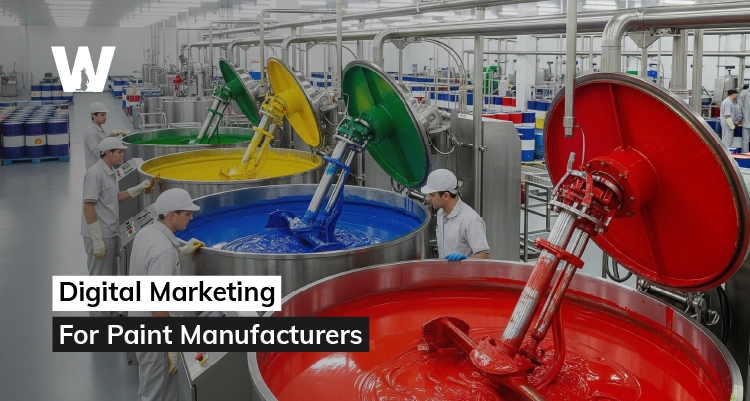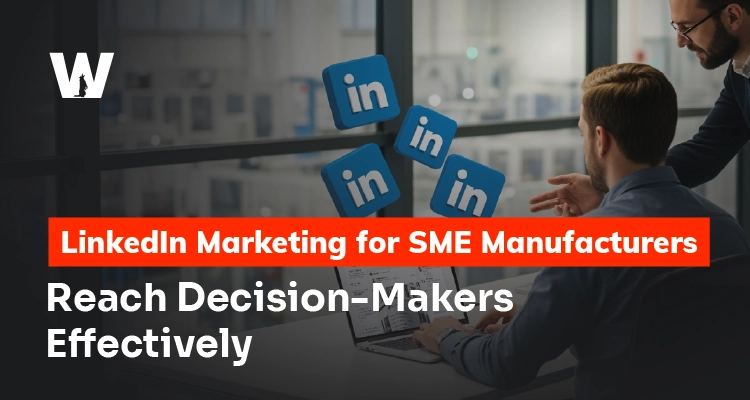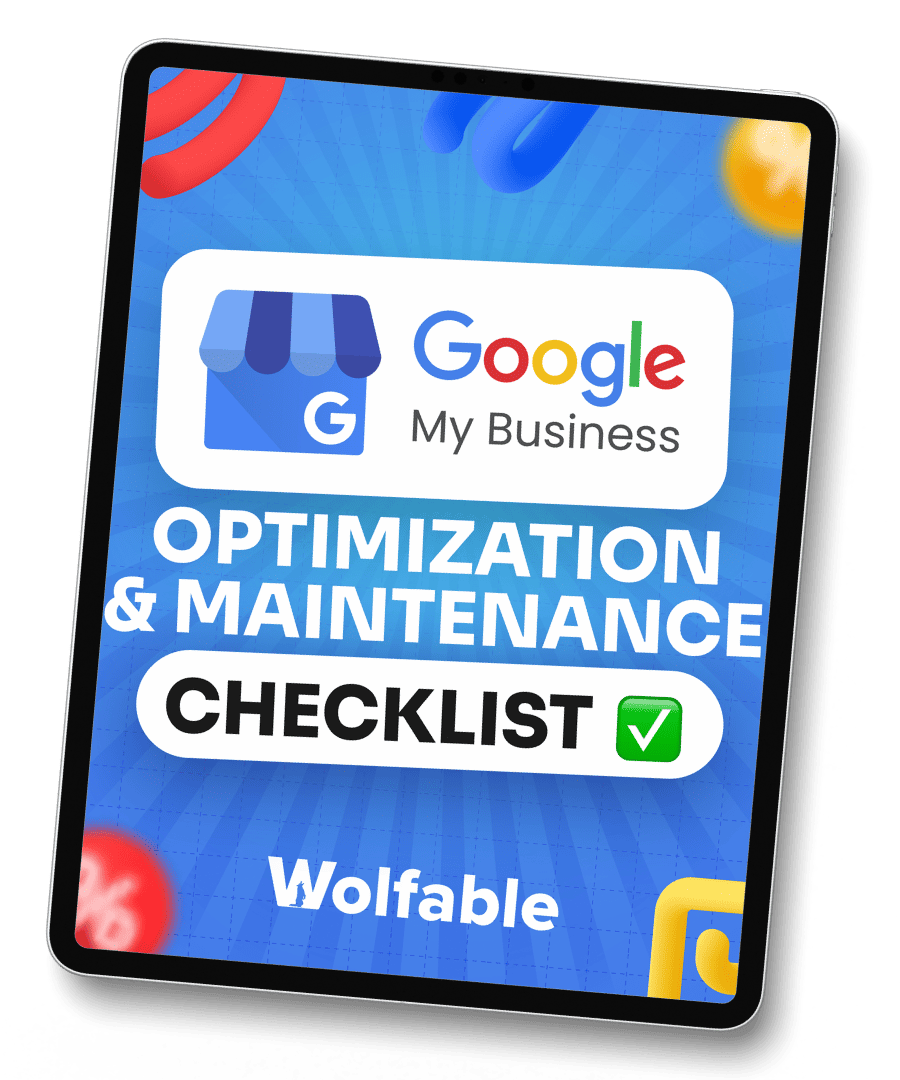Wraps up in 13 Minutes
The paint industry is about transformation. You don’t just sell cans of color; you sell protection, aesthetics, and the promise of a fresh start. But in a market saturated with global giants and nimble local players, how do you ensure your brand is the one architects, contractors, and property owners choose?
The answer isn't just a better product—it's a smarter digital presence. A robust digital marketing strategy is no longer a "nice-to-have"; it's the primary engine for growth in a global paints and coatings market projected to surpass $220 billion by 2028. At Wolfable, we specialize in transforming traditional B2B marketing funnels into powerful digital ecosystems designed to capture a share of that growth.
This guide will walk you through the essential strategies that paint manufacturers must adopt to not just compete but dominate their niche online. We'll cover everything from getting found on Google to engaging high-value B2B clients.
Why is Digital Marketing Now Crucial for Paint Manufacturers?
The days of relying solely on distributor relationships and print catalogs are fading. Your buyers' journey has fundamentally changed. A staggering 74% of B2B buyers now conduct more than half of their research online before making an offline purchase. This means your digital presence is your new frontline sales team.
Digital marketing allows you to connect directly with your end-users, bypassing traditional gatekeepers. This direct line of communication helps you understand their needs and build a brand that resonates on a deeper level than just a color swatch.
Furthermore, digital channels provide invaluable data. You can track which products are getting the most attention and which campaigns are driving qualified leads. In an industry where formulation and R&D are key, this direct market feedback is gold, allowing you to make smarter, more profitable business decisions.
Finally, a strong online presence builds credibility. When a contractor searches for your brand, a professional website and informative content solidify their trust. In fact, 84% of B2B decision-makers state that a supplier's website is a critical validation point.
What Are the Core Pillars of a Paint Marketing Strategy?
A successful strategy isn't about using one or two channels; it's about building an integrated system where each component supports the others. For paint manufacturers, the focus should be on building authority, generating qualified leads, and nurturing long-term relationships.
What Role Does a Professional Website Play?
Your website is your digital flagship store. For a paint manufacturer, it must be a functional, user-friendly resource. This isn't a minor detail—over 60% of B2B buyers report that a poor mobile experience negatively impacts their perception of a brand.
Key features for a paint manufacturer's website include:
- Intuitive Product Navigation: Allow users to filter by application, product type, or industry.
- High-Quality Visuals: Professional photos and videos of finished projects.
- Digital Color Tools: An interactive paint visualizer can increase user engagement by over 30%.
- Easy-to-Access Technical Resources: Make it simple to find and download TDS and MSDS.
- A "Where to Buy" / Dealer Locator: A crucial feature to connect online interest with offline sales.
Your website must be fast, secure, and fully responsive, as many contractors will access it from the field. At Wolfable, our Web Design & Development team specializes in creating websites for B2B clients that are engineered for lead conversion.
How Can SEO Put Your Paint Brand on the Map?
Search Engine Optimization (SEO) is the foundation of your digital presence. Consider this: Google is involved in nearly 90% of B2B research queries. If you’re not on the first page for keywords like "high-performance industrial floor coatings" or "low VOC interior paint," you are effectively invisible to the vast majority of your potential clients.
Effective SEO involves targeting keywords across the buying journey, from informational queries like "what is the best paint for humid climates?" to high-intent terms like "buy epoxy paint for garage floor."
Local SEO is equally critical. With the professional painting contractor market in the U.S. alone valued at over $50 billion, connecting with these local businesses is paramount. Optimizing your Google Business Profile for each dealer location ensures that when a painter searches for "paint supplier near me," your partners show up prominently, driving vital foot traffic.
Is Content Marketing Truly Effective for Selling Paint?
Absolutely. This isn't just theory; it's proven behavior. Today's B2B buyers consume an average of 13 pieces of content before selecting a vendor. Your content—from blogs to case studies—serves as critical touchpoints in that decision-making journey, proving your expertise long before a sale.
Your content should answer the specific questions of your target audience segments:
- For Architects & Specifiers: Detailed case studies, technical data sheets (TDS), and whitepapers on coating technologies that help them meet performance and sustainability goals.
- For Contractors & Painters: "How-to" video tutorials and blog posts comparing product lines. This builds loyalty with professionals who make up a significant portion of the decorative paint market (often 40-50% of total volume).
- For B2C / DIY Customers: Inspirational blog posts on color trends, DIY project guides, and easy-to-use paint calculators to simplify their buying process.
This value-driven content positions your brand as a helpful partner, not just a supplier, and provides fuel for your SEO efforts.
Struggling to create content that resonates with both technical and creative audiences?
How Can Performance Marketing Drive Immediate Leads?
While SEO and content are long-term investments, Performance Marketing (like Google Ads and LinkedIn Ads) delivers immediate, measurable results. It allows you to place your brand directly in front of customers who are actively looking for a solution. For businesses using it, Google Ads has been shown to have an average ROI of 200%.
For a paint manufacturer, you can run Google Ads targeting users searching for specific product types, like "antimicrobial paint for hospitals" or "DTP metal paint."
On platforms like LinkedIn, you can target your ads with surgical precision. Imagine promoting your latest industrial coating directly to "Project Managers" and "Architects" at major construction firms. This is the power of B2B lead generation at its finest.
Ready to fine-tune your marketing for different audiences?
Can Video Marketing Effectively Showcase Paint Products?
Video is one of the most powerful tools in your arsenal. The data backs this up: marketers who use video grow revenue 49% faster year-over-year than those who don't. For a tangible product like paint, video transforms abstract benefits like durability into visible, undeniable proof.
Effective video marketing ideas include:
- Application Guides: Show the proper technique for a specialized coating.
- Durability Tests: Create short videos showing your paint resisting scratches, stains, or weather.
- Project Time-Lapses: Condense a large-scale project into a stunning 60-second video.
- "Meet the Expert" Series: Feature your chemists explaining the science behind your formulations.
These videos can be used on your website, shared on social media, and included in email newsletters to engage your audience.
How Do You Target Both B2B and B2C Audiences Online?
Many paint manufacturers serve two different masters. The global paint market is typically split with the architectural/decorative segment being the largest (around 53%), and the industrial/specialty coatings segment making up the rest. Your digital strategy must speak to both.
The key is segmentation. An architect is concerned with performance specs, while a homeowner cares about color trends.
Comparison Table: B2B vs. B2C Paint Marketing
| Aspect | B2B (Architects, Contractors) | B2C (DIY Homeowners) |
|---|---|---|
| Primary Goal | Generate qualified leads, specifications | Build brand awareness, drive retail sales |
| Key Platforms | LinkedIn, Google Search, Industry Forums | Instagram, Pinterest, Facebook, YouTube |
| Content Focus | Technical performance, case studies, durability | Inspiration, color trends, how-to guides |
| Tone of Voice | Authoritative, professional, data-driven | Aspirational, helpful, friendly |
| Sales Cycle | Long, relationship-based | Short, transaction-focused |
| Call to Action | "Request a Spec Sheet" | "Find a Local Retailer" |
By crafting your messaging, you can effectively engage both markets and maximize your brand's reach.
The Finishing Coat: Partnering for Digital Success
Navigating the complexities of digital marketing can be overwhelming. The paint industry has unique challenges, and you need a partner who understands the landscape.
At Wolfable, we don't just build websites or run ads; we build comprehensive digital growth engines. We combine data-driven strategy with creative execution to help you connect with more specifiers, win more contracts, and build a brand that stands the test of time.
Don't let your brand get lost in the noise. It’s time to paint a bold, digital future for your company.
Ready to transform your online presence? Let's talk about how Wolfable can architect a digital marketing strategy that delivers measurable results. Get in Touch With Our Team Today!








